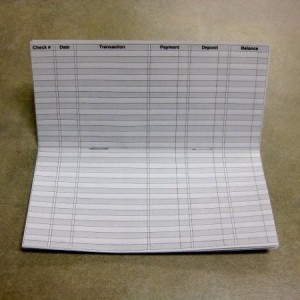

In the Toolbox window, select Calculated Fields in the resource list, and then select New. The restriction should resemble the following:UPR_Check_HIST.EmployeeName = UPR_Check_HIST.EmployeeName In the Operators area, select the Equality operator button (=).In the Table Fields list, select Employee Name.In the Report Table list, select Payroll Check History.In the Report Restriction Definition window, type Payroll in the Restriction Name field.Select Restrictions, and then select New.Select Payroll Check History, and then select OK.Select CM Transaction, and then select New.In the Modified Reports pane, select Checkbook Register, and then select Open.In the Original Reports pane, select Checkbook Register, and then select Insert.In the Table Definition window, select OK, and then close the Tables window.In the Primary Table column list, select CM Trx Number to match to the CM Trx Number field.
#Checkbook register code

Step 2 - Create a table relationship between the CM Transaction table and the Payroll Check History table In the Product list, select Microsoft Dynamics GP.On the Microsoft Dynamics GP menu, select Tools, point to Customize, and then select Report Writer.If the employee name was displayed in Bank Reconciliation for each payroll check, employee confidentiality would be lost. In many business practices, the accounting administrator may not want the individual in charge of Bank Reconciliation to see how much other employees are earning.


 0 kommentar(er)
0 kommentar(er)
